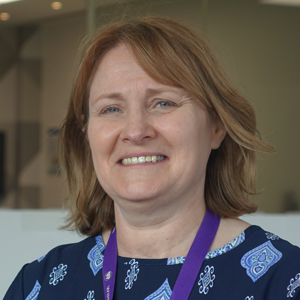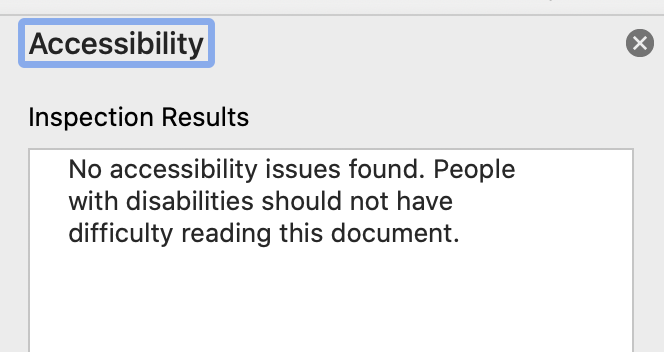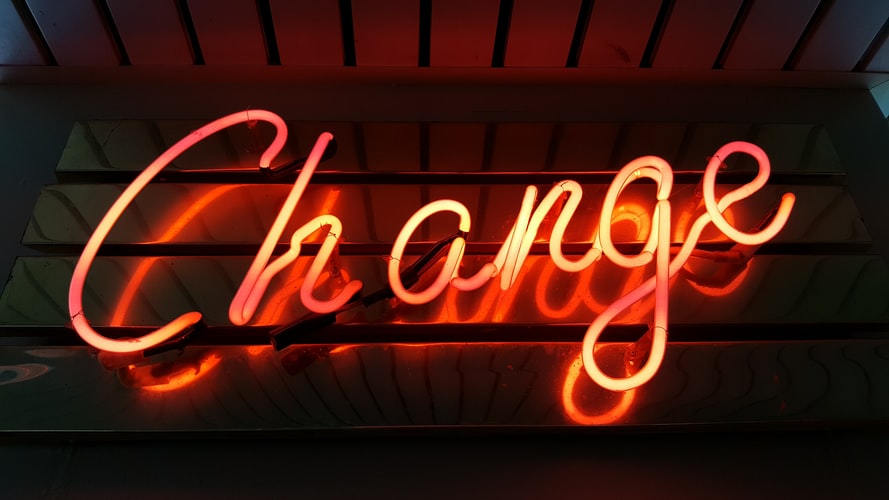How digital accessibility can drive diversity and inclusion
Stuart Andrews | 14 Jun 2021Diversity and Inclusion (D&I) have rapidly become a mainstream part of the business landscape and are increasingly seen as a business priority, with global indices tracking companies’ D&I performance and ranking them accordingly. Accessibility leaders may be familiar with the values that underpin diversity and inclusion, but what role can they play in delivering D&I goals?
Stuart Andrews is a freelance journalist, commissioned by AbilityNet.
He spoke to AbilityNet's Mairead Comerford, Google’s Chris Patnoe, The Valuable 500’s Caroline Casey, Diversity & Inclusion Exec Sheree Atcheson and Verizon’s Samantha Soloway. They explained how they’re driving a cultural change in their own organisations and the connection between D&I and their vision of a digital world that is accessible for all.
- What is the difference between diversity and inclusion?
- Why do diversity and inclusion matter?
- How diversity and inclusion drive business value
- Why diversity and inclusion programmes fail
- Technology’s role in driving diversity and inclusion
- Driving Diversity and Inclusion in the workplace
- How do you build a culture of diversity and inclusion?
- Leadership in Diversity and Inclusion
- The role of training within Diversity and Inclusion
- How do you measure Diversity and Inclusion?
What is the difference between diversity and inclusion?
Often presented as a double-act, diversity and inclusion are critical parts of your company strategy - but they are not the same.
Diversity means recognising the diverse needs of individuals. For example, a wheelchair user is only disabled when entering a building if there is no ramp; an employee with a visual impairment can access documents, websites, and apps if they are attuned to work with assistive technologies (AT) such as a screen reader.
Inclusion focuses on ensuring that every employee and customer feel seen and valued. So, employees can work to their full potential, whatever their background or identity or whatever disabilities they have.

“An equitable employer respects the unique needs, perspectives and potentials of all team members.”
Mairead Comerford, Head of HR for AbilityNet
As Mairead Comerford, Head of HR for AbilityNet (a Disability Confident Leader), says: “An equitable employer respects the unique needs, perspectives and potentials of all team members and creates deeper trust and commitment from employees. It outpaces competitors.”
Christopher Patnoe, Head of Accessibility Programs and Disability Inclusion at Google, agrees: “Some businesses forget that human beings are not cogs,” he said. “We all have the ability to bring something unique and powerful.”
Why do Diversity and Inclusion matter?
Inclusion drives innovation, creates better workplaces and better products. Partly, this is because a diverse workforce pushes a business into thinking about issues it might otherwise find uncomfortable.
Doing so can generate ideas and uncover problems that a more homogenous team might never see.
“Teams of people create innovations' says Comerford. "So the more diverse teams are, along many dimensions, the more likely they are to draw inspiration from unrelated places.”
Patnoe agrees, “A more diverse workforce provides a more diverse set of answers and – more importantly – a more diverse set of questions."
How diversity and inclusion drive business value
Embracing different lived experiences is essential for growth.
Caroline Casey, Founder and Creator of The Valuable 500, says: “Business is about delivering to the bottom line; it is interested in growth; in innovation,” she said. “The only way we can get growth and innovation is to access different lived experiences around innovation, and that insight leads to innovation and, for growth, to access to more markets.”
Tech giants often at the forefront of innovating agree, and Google’s Patnoe agrees with this point: “Disability creates this need to solve problems; you have these passionate, technically expert people on the team, contributing in ways you hadn't expected.”
Hector Minto, Senior Technical Evangelist for Microsoft Europe, believes employees are the most powerful advocates for change: "Having employees with disabilities telling you the hard truths about your product drives more impact inside the business because it's not this other-ism," he said, speaking at Microsoft's Ability Summit 2021.
Listen to the AbilityNet Accessibility Insights Podcast for more from our conversations with the global accessibility community, and the accessibility leaders who are working to build a digital world accessible to all.
Why do diversity and inclusion programmes fail?
 Too much focus on demographic data is one reason D&I initiatives fail, says Sheree Atcheson, author of Demanding More (Why Diversity and Inclusion Don't Happen and What you can do about it). “People assume when you talk about data in inclusion related work that we're talking about demographic data or representation as a singular marker of inclusion," she said. "That's one of the biggest pitfalls I've seen.”
Too much focus on demographic data is one reason D&I initiatives fail, says Sheree Atcheson, author of Demanding More (Why Diversity and Inclusion Don't Happen and What you can do about it). “People assume when you talk about data in inclusion related work that we're talking about demographic data or representation as a singular marker of inclusion," she said. "That's one of the biggest pitfalls I've seen.”
The Valuable 500’s Caroline Casey agrees that diversity and inclusion must go beyond box-ticking.
“The biggest barrier pre-Covid was that businesses could say, 'this year we are focusing on gender, next year we're doing LBGQT, maybe we might do race'," she said. "That is not inclusion, and that is not diversity. It's a delusion. It is a hierarchy.”
Businesses “continue to create 'exclusionary inclusion', prioritising those they feel an affinity towards, and often pushing diversity of gender above other forms of diversity and inclusion,” said Atcheson.
“Disabled people are being left behind, people of colour are being left behind," she says, "and the intersections of those things goes across everything. It goes across neurodiversity, sexual orientation, caring responsibility, socioeconomic background and everything else.”
Technology’s role in driving diversity and inclusion
The sudden shift to remote working at home due to Covid-19 has amplified inclusion messages, and the role technology can play.
“Technology is critically important, especially when it comes to disability," said Patnoe referencing accessibility tools within online platforms, notably captions and audio descriptions.“It’s beneficial for someone who is deaf or hard of hearing. They get to follow the contributions very, very clearly because each person has an attribution, and every person has a caption.”
 Tech giant Microsoft made a raft of announcements at Ability Summit 2021 as part of a five-year commitment to supporting people with disabilities.
Tech giant Microsoft made a raft of announcements at Ability Summit 2021 as part of a five-year commitment to supporting people with disabilities.
For example, the company is switching on the accessibility checker within Microsoft Word by default. It hopes to make it as ubiquitous as the spellchecker so that documents created within organisations are accessible to everyone.
Notably, Microsoft saw a 30x increase in the use of Microsoft Teams’ captioning features between February and April 2020.
However, there’s more to be done. “The inclusion of people with disabilities is important,” said Samantha Soloway, Accessibility Lab Manager for Verizon Media. “But we still have a way to go in “making sure that technology serves everyone, including those with disabilities."
“We aim to have accessibility at the centre of everything we do. Our products are born accessible, and accessibility is part of everybody's job.”
“If you’re designing from the extreme need,” says Caroline Casey, “you're probably going to fulfil everybody's need. So I see the disability experience being the greatest insight to help companies achieve universal accessibility, which is not simply about the disability market but also about the ageing market.”
Driving Diversity and Inclusion in the workplace
 So, how can organisations drive their diversity and inclusion agenda?
So, how can organisations drive their diversity and inclusion agenda?
To be successful, it needs to go beyond policy and permeate every area, activity and process, says AbilityNet’s Comerford. “I think sometimes companies think that, as long as you’ve got a policy, you’re driving D&I forward, but that’s not the case,”
With AbilityNet, D&I runs through the organisation, beginning with recruitment. “We’re always looking at recruitment and at how it can be more inclusive,” said Comerford. "We take feedback not only from the interviewers but also the interviewees – how it’s gone and any feedback.”
AbilityNet uses an award-winning app called ClearTalents during recruitment that enables candidates to state if they have specific needs or concerns about the process.
Candidates don't have to speak up about any disabilities. Still, they can request the option to prepare a video or see interview questions in advance as an alternative to a face-to-face presentation or a conventional interview.
“We don't need to know why they have requested it - and it doesn’t mean that they have an unfair advantage,” says Comerford. “It’s just that people have different ways of doing things, and I think we’re trying to embrace that. We’re not trying to catch people out at interview – we’re just trying to get the right person for the right job.”
Verizon's Samantha Soloway also believes in a holistic approach.
“We know how to make sure that people with disabilities feel included at the workplace, but more so, that our hiring processes are inclusive and that accessible. Once someone joins Verizon Media, we want to make sure they have a positive experience and stay.”
How do you build a culture of diversity and inclusion?
 Every organisation working on diversity and inclusion faces challenges, and how to create cultural change is one of the hardest tasks.
Every organisation working on diversity and inclusion faces challenges, and how to create cultural change is one of the hardest tasks.
“I think that company culture is the biggest challenge,” says Patnoe. “Small companies tend to have so many things that they need to do and, frankly, diversity and inclusion are often not at the top of the list.’
Patnoe understands that while it's easier to promote diversity and inclusion at Google because it has the scale to have a specialist team, smaller companies don't have the same resources. "Everybody has multiple hats that they have to wear," he explains, "and they think that they don't need to do it, but what they don't realise is that they're harming their staff."
Caroline Casey agrees that culture is a huge issue. "When we talk about culture, it's creating environments where we can be whole, and where individuals are truly allowed to turn up as the whole human being that they are."
Many leaders face an uphill struggle in how they develop inclusive work culture. "How do they come to the table when they've never done this before?'" said Casey. "How do they prepare for this? How do they put measurements in place?"

"Everything needs to incorporate accessibility from the start."
Sam Soloway, Verizon Media
'I think companies might struggle with applying it to their entire ecosystem', says Verizon's Sam Soloway. "Making sure that we are the most meaningful and the most effective means applying knowledge of accessibility and disability and inclusion into our user-facing products."
It's also about ensuring that disability and inclusion run through the company's DNA including its business partners, procurement, marketing, internal and external communication, recruitment, hiring, and training. "Everything needs to incorporate accessibility from the start.”
Leadership in Diversity and Inclusion
Buy-in across an organisation is critical if cultural change is to succeed, and that demands strong leadership.
"We have been successful in Google in our work in terms of disability and inclusion because we've been able to convince our leadership that it matters," said Patnoe.“We've been able to convince the teams that it's important. And we've been able to make people uncomfortable, but not too uncomfortable. You have to push people.”
The Valuable 500 targeted the C-Suite, "because it's completely around them that we drive change," says Caroline Casey of the Valuable 500's highly successful two-and-a-half-year campaign.
''We built this community to break the CEO silence, the business silence, around disability and inclusion. So that we could drive real, true understanding of the value that people with disabilities and their families bring," she explained.
Comerford agrees: "You have to have leadership buy-in. It's not just a tick list from leadership – you have to have time allocated to D&I," she said. “Diversity and inclusion initiatives have got to align with your organisational goals and your company values or, they will be pushed to the back burner."
“And leadership need to lead by example, by integrating D&I into their hiring interview process and how they treat fellow employees."
The role of training within Diversity and Inclusion
A coherent training programme has a vital role to play, says Soloway.
"Training plays a significant part in the solution. Training is everything," says Soloway. "When we as a team have been building our employee engagement and learning and development resources, people with disabilities have been informing what the best practices are," she said.
Verizon developed training on assistive technology (AT) to evaluate Verizon's work and its editorial. "It spans different content areas, but using the true subject matter experts – those with lived experiences – is so important."
Comerford also believes that training is essential. "Training helps all employees understand different perspectives. It encourages them to think about their actions and how they could unintentionally offend someone, " she says.
Patnoe says that training pushes people. "It's not just pushing people but pushing them and providing them with the tools to be able to fend for themselves. It has to be OK to make mistakes, too. You're never going to get it right the first time,"
"Everyone's going to make a mistake. But as long as you approach it from the point of authenticity and sincerity, you should be fine."
Caroline Casey agrees. "Our organisations have the intention to do this better, and that means for them to do things differently, they're going to have to innovate, and with innovation comes failure. That's the culture we need because no company just gets this right. It's tough."
Explore unconscious bias within your organisation
Perhaps most of all, organisations and their leaders have to consider their own unconscious bias. Here, training helps people to engage.
Comerford is aware of the media balance against unconscious bias training, but she says, "It was one of the best training courses we've run and generated the best feedback on training from staff."
"It was very engaging for people to realise that we all have a sense of unconscious bias, and to think about that and how it impacts on your recruitment. We all think that we don't have any issues, but training will show you that there are little bits that come out."
Training is essential but part of a broader journey. "Often, people will start by rolling out training on unconscious bias, and this and that," says Atcheson. "But truly, we don't know what bias exists in their companies."
How do you measure Diversity and Inclusion?
Measuring inclusion goes beyond demographic data, says Atcheson. “You can't tick box an exercise’ she says. “All too often, people define a process, a policy or a solution; they'll develop it, and then roll it out, and then they will find issues with it. You're just causing more harm or more exclusion in the world,” she said.
A genuine inclusion strategy looks at who’s progressing, how people from different groups feel about training opportunities, about belonging, management, loyalty and support all “so you don’t make any assumptions.”
Minto agrees that good data is part of the solution. "It's not just 'ticking the box," he said at Ability Summit 2021. "It's about being prepared to be audited; we want to know what works and what doesn't."
AbilityNet is a Disability Confident Leader as part of the UK government’s Disability Confident Scheme, a voluntary framework designed to encourage employers to recruit and retain disabled people and those with health conditions.
"What’s important is not just collating the data but to learn from it,” says Comerford. "We gather a range of data on who's employed but also who has risen to a management position and consider audience and employee sentiments based on surveys."
“Data collection, benchmarking, and feedback help you challenge any assumptions and ensure that your diversity and inclusion strategy is on the right path. What are your actionable points? What can you change and improve? What should you react to? What can you ignore, and what needs to be done today?"
"It's important to measure the failure first, and then build on that.”




